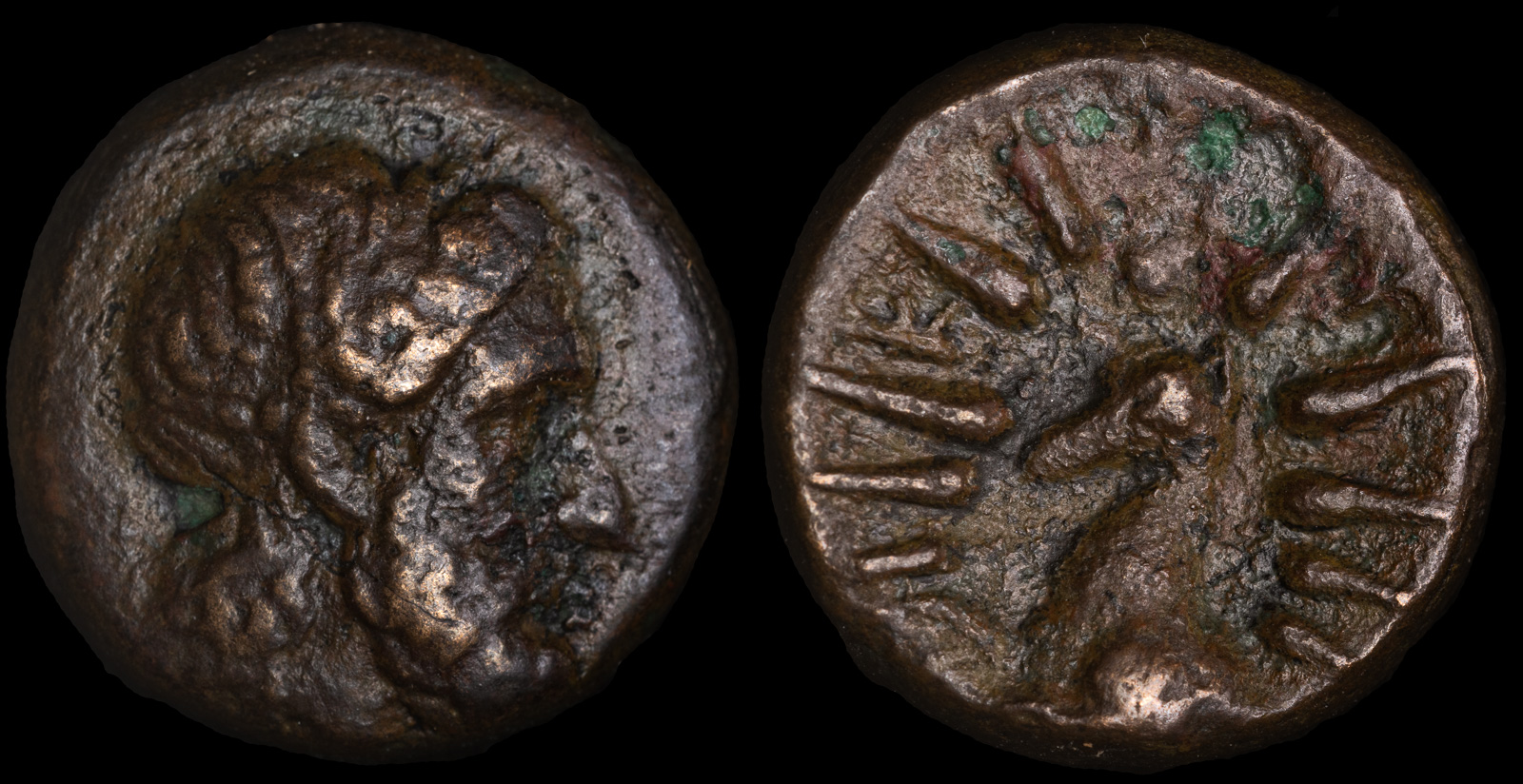
Cyclades, Kea
Keia Koinon Circa 4th-3rd Century BCE
16mm 4.81g
Obverse: Laureate head of Aristaios right
Reverse: Forepart of dog Sirius left, within rays of star
SNG Copenhagen 623-4, Papageorgiadou-Banis Series II, Issue 6
Kea is an island near to Attica and is among the oldest settled places in the Cyclades, together with its neighbor Kythnos. In fact, the coinage from the two is often confused and was likely in use across both places. Today, they form part of the same administrative unit.
The story from the coin is that in the super-ancient days there were a lot of nymphs who inhabited the springs of the island. One day, the gods were strolling on the island, admiring its beauty, when they became jealous of the nymphs who lived there. So, they sent a big lion to scare them all away.
The inhabitants, in order to convince the lion not to eat them, carved a lion in stone to appease it. I’m not sure how that would accomplish anything, but perhaps this was a very vain lion who liked to look at himself all day instead of devouring villagers. I also wonder if a lion did happen to arrive on the island during those times, as lions as a species were known in Greece back then and such animals have been known to swim some distance in the search for territory.
Anyways, without the nymphs tending to the springs the island became very dry. So, the islanders appealed to Aristaois, depicted on the obverse. I’m not exactly sure what he accomplished other than to bring the matter to Zeus, who turned out to be a nice guy and arranged for it to rain. However, not only were they to build a temple to him, but they also had to watch out at the beginning of each summer to the dog star Sirius. If the star appeared clear in the sky, then they would have a breezy summer. Otherwise, it was time to install AC. The dog star Sirius is depicted on the reverse.